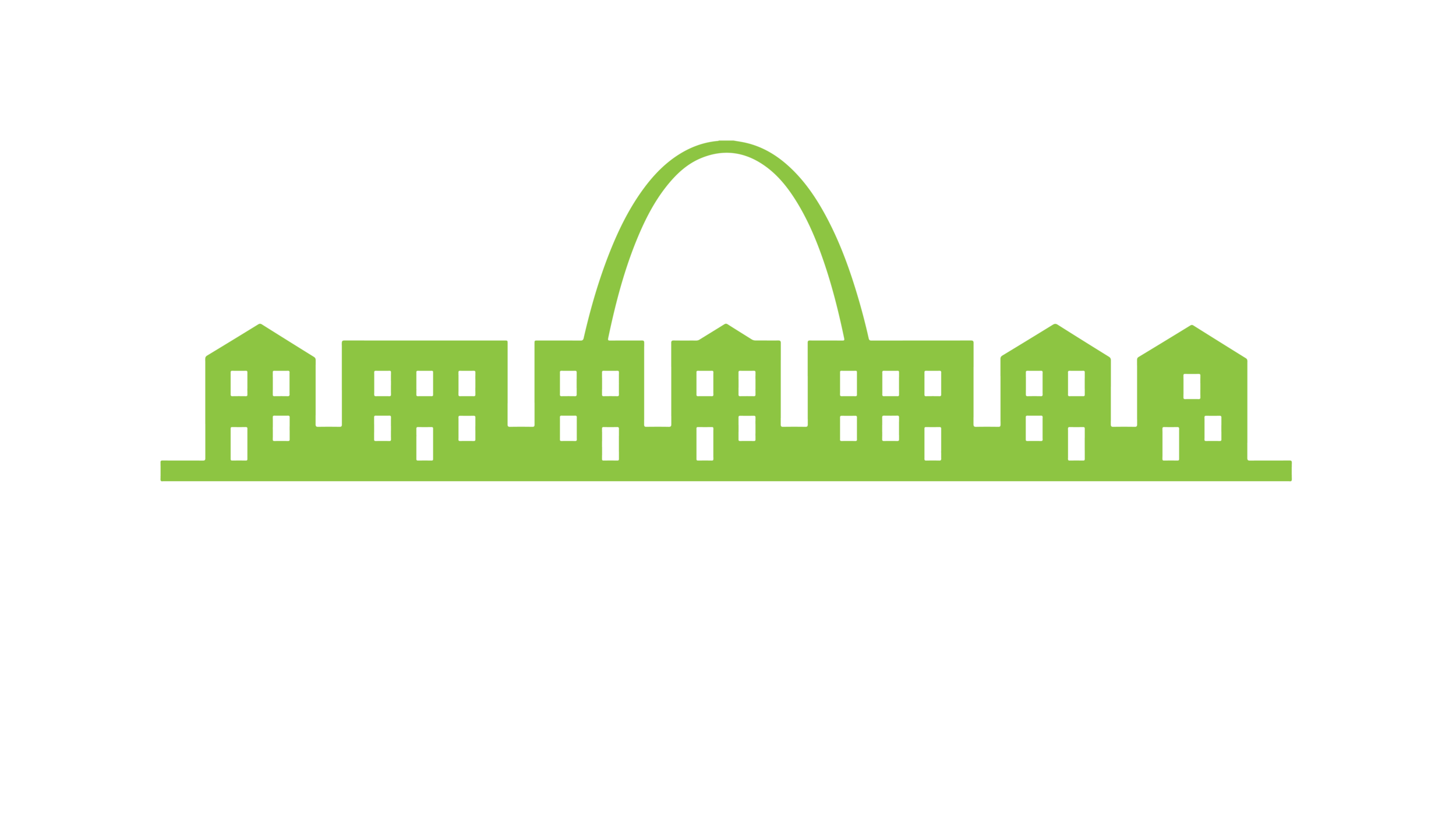Grace in Lindell Park
Pat and Kevin Huntspon at their home in Lindell Park, 2017
Pat and Kevin Huntspon moved to St. Louis from Chicago in 1994. They moved to Lindell Park (close to MSTL's new building) a few years after that. North St. Louis City is not an area known for many new residents, but the Huntspons took a chance and moved to a place forgotten by many in our city. And sure enough, even after businesses moved out, homes were left vacant and crime increased, the close-knit community of Lindell Park, like many communities in North City, continued to press on. After 14 years, Pat and Kevin’s neighbors are their family.
The house the Huntspon’s live in today is 102 years old, its history includes fire, abandonment and neglect. Through their local church, they made a sweat equity agreement to rehab it. Volunteers from all over the country came to work on their house. Homemade BBQ was given in exchange for electrical work (Kevin is a retired chef). Pat affectionately calls her house the Grace House to commemorate all the work countless strangers put into it.
Pat hasn’t taken that grace for granted. Since making St. Louis her home, she has become an active engaged citizen. In 2015, she started the Lindell Park Grassroots Community Leadership organization. She leads regular meetings at her local church to educate her neighbors on important issues confronting their close knit community. These meetings bring together neighbors and guest speakers to talk about local developments, crime, grant opportunities and much more. For Mission St. Louis, attending the meetings has meant a closer connection to the community and the ability to learn about the struggles facing our neighbors, along with their accomplishments.
Homes seen from the backyard of the Huntspon's house, 2017
Living in North City comes with its own unique trials. Many of the homes in Lindell Park were once valued above $100,000. Today however, those same homes are valued below $20,000. This value decrease stems from a variety of reasons including high crime and few nearby amenities. Not only that, but vacant and abandoned homes owned by those uninterested in upkeep further decrease home values for the whole neighborhood. From Pat’s back porch you can see two such vacant structures; two once beautiful buildings now with sagging roofs and broken windows. Such a drastic change in property value not only makes it impossible to sell a house at a price close to what it was purchased at, but it also makes it very difficult to get a loan for home improvements. If most people on a street can’t get loans to improve their homes, then the values of all those homes decrease even more (even for those homes where improvements have been made).
Another difficulty for residents is the surrounding commercial areas. When you picture an ideal city neighborhood, you might envision a playground with a grocery store next door; a local restaurant up the street and a dry cleaner close by. When many current neighbors first moved into the area in the late 50s and early 60s, they moved into a busy, business filled community. Their once integrated neighborhood soon lost almost all of their white neighbors to white flight and with them many businesses. Further population decline along with a lack of loan opportunities for new minority business owners hollowed out the commercial streets, leaving more vacant buildings, empty lots and few surviving business. Neighbors like Pat hope to one day see their community grow and flourish again. She says she hopes Lindell Park can be “truly vibrant” with local schools, coffee shops, fresh food, walking paths and department stores. A place where businesses are owned by residents involved in the community.
An AMP group from Texas works with residents to clean up a lot near Mission: St. Louis, 2017
As for Mission: St. Louis, Pat says she is happy we chose this location; happy we filled a vacant building; happy we are asking for advice from our new neighbors, who have been here much longer than us! She says that being inclusive to the neighborhood is essential to becoming part of the community. “When you move into our neighborhood, you become family”. Although fostering these neighborly relationships are not part of Beyond Jobs or Beyond School, we believe that being part of that family is essential to our long term success. We have to earn our place in the community and we are doing our best to meet that challenge. We want to continue attending neighborhood meetings, and to get to know the neighborhood outside of Lindell Park. We want to introduce visitors to our community and have already conducted cleanups with our neighbors working alongside AMP volunteers. We want to be a resources for homeowners trying to improve their homes and for those who would like to one day be homeowners themselves.
When asked what she would like to say to Mission: St. Louis supporters (especially those who have not visited our new building or even visited North City), Pat said, “Come, see, learn and get to know us”.
For a long time, St. Louis has been a city disconnected from its individual parts. If you have the opportunity to play even a small role in connecting this city together, please take it. Please get to know a part of the city your do not know. Get to know people you do not know. It won’t always be easy and the path will not always be clear, but it's usually worth the reward.
To learn more about ways people are trying to connect our city together, check out these important programs and studies:
St. Louis Promise Zone | Forward through Ferguson | For the Sake of All
And don’t forget to visit us and meet our neighbors at 3108 N Grand!





